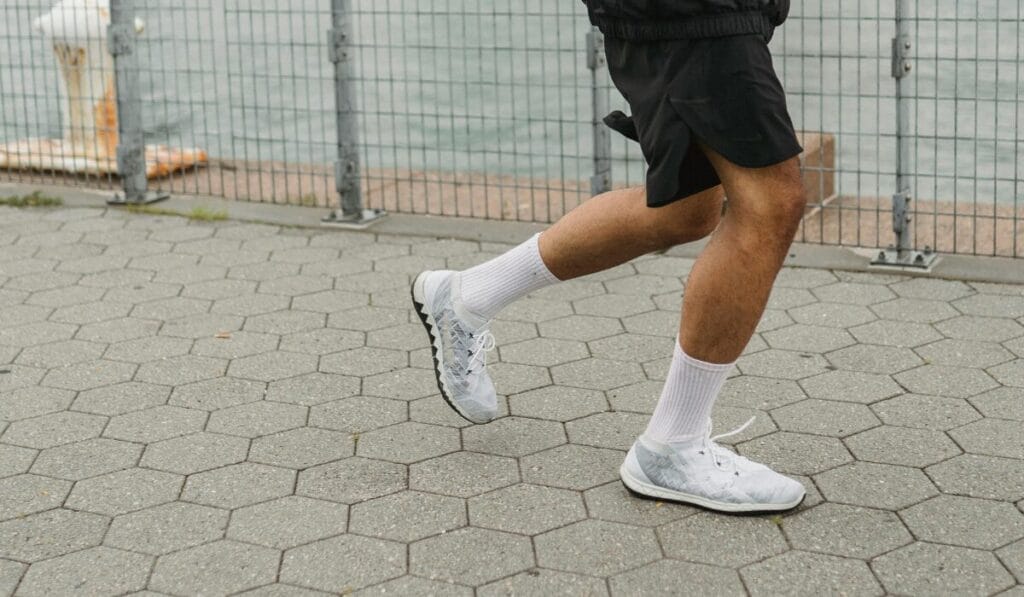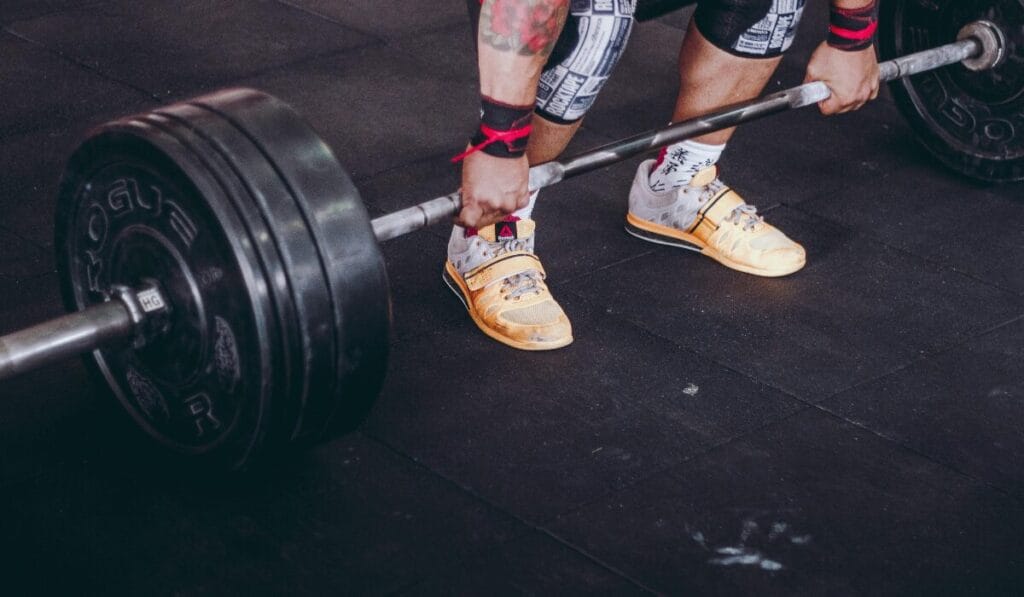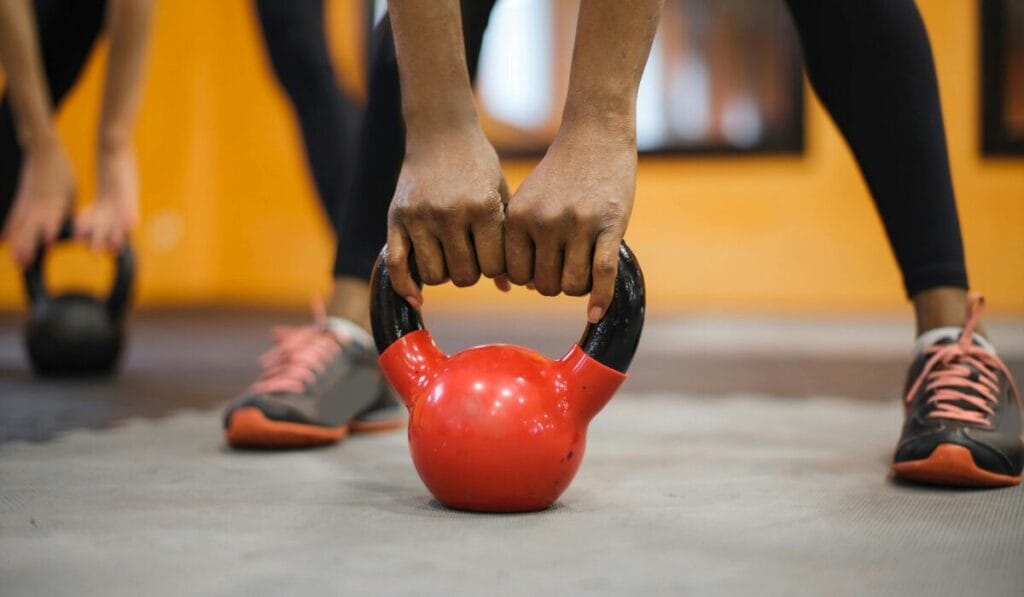Walking Shoes vs Training Shoes, whatever, but choosing the right shoes is essential for everyone to avoid injury and get comfort and support. Many people are still confused about the difference between training shoes and walking shoes because both look the same, but remember that the purpose of both is different. That is why we have written this blog on training shoes vs walking shoes so that you can choose the best pair based on your activities. So stay with us.

What Are Walking Shoes?
From here, you know the key difference. Walking Shoes vs Training Shoes Walking shoes are designed for comfort, support, flexibility, and specific purposes, increasing movement from heel to toe and making it easier for the foot to walk long distances. Some of the important features are:
Key feature of Walking Shoes vs Training Shoes
- Arch Support: Preventing stress and providing stability.
- Cushioned Midsoles: Absorbs shock and reduces the impact on joints.
- Flexible Forefoot: Supports smooth walking and also provides support.
- Lightweight Design: Fatigue is the enemy, especially on long journeys
- Breathability: Provides cooling to the feet and proper airflow direction.
- Minimal Heel Drop: Supports natural gait and keeps posture correct.
What Are Training Shoes?
Training shoes, also known as trainers, are designed for various types of exercise, such as gym exercises, weightlifting, and aerobics, and are used to support various movements, such as jumping, running, and many other tasks.
- Lateral Support: Providing stability for lateral movements.
- Cushioning for Impact: Protection from shock, especially when doing more strenuous and intense exercise.
- Flat and Stable Sole: Strong contact with the ground when doing weight training.
- Durable Outsole: Increased grip and traction for surfaces such as the gym and floors.
- Reinforced Structure: Avoid excessive wear when exercises vary.
Higher Ankle Support: Prevent twisting, especially in various movements.
Pros and Cons of Walking and Training Shoes
Pros and Cons of Walking Shoes
| ✅Prose | ❌Cons |
| Very comfortable for both short and long walks. The design and construction are lightweight and breathable. Eliminates chafing. | Not suitable for gym or other high and multi-activity activities. Provides less stability in movement. |
Pros and Cons of Training Shoes
| ✅Prose | ❌Cons |
| Perfect for a variety of workouts and stylish too. Great for jumping. Provides excellent ankle support. | Slightly heavier than walking shoes. May lack comfort over long distances. |
Can You Use Training Shoes for Walking?
Yes, you can use training shoes for walking, especially if your walking has a training flavor, such as short jogs, light jumps, however, they can tire you out on long walks because they are heavy.
Can You Use Walking Shoes for Training?
Not at all, because walking shoes are designed for forward movement; changing direction is not correct. Using walking shoes for activities other than walking can lead to instability and injury.
Common Myths About Walking Shoes and Training Shoes
Some hearsayers say that walking and running shoes are interchangeable, meaning they can be used in place of each other, which is completely wrong. Walking and running are two different activities; how can they be performed with shoes of the same design and material? Walking shoes are designed for forward movement, while training shoes are designed to handle different movements.
Someone has also said that the more cushioning, the better the shoe, but this is completely wrong. Sometimes, this very cushioning reduces stability during exercise.
Price vs. Performance – Does Spending More Help?
Often, expensive shoes are the best, but this is not necessarily the case because even mediocre shoes are sometimes the best. The best shoe is one that suits your activity, fits well, and provides you with comfort. No one can guarantee that every expensive shoe is good.

Which One Should You Choose?
What’s best for you depends on your life and activities:
- For Long Walks & Daily Use: Walking shoes are better because they have flexibility and comfort.
- For Gym Workouts & Cross-Training: Training shoes are best for exercises because they are designed for this very purpose, such as aerobics and weight training.
- For Occasional Walking & Fitness Activities: IAnd if one wants the same type of shoe for both, then training shoes are fine but may not provide comfort on long walks.
- For Stability & Support During Workouts: Training shoes are better because they are better designed.
Tips for Selecting the Right Footwear
- Assess Your Activity Level: Look at your daily routine and see the amount of use.
- Check the Fit: It is important to take care of the fit when buying both.
- Consider the Surface: Walking shoes are best used on the sidewalk, while training shoes perform their duties better on the gym floor.
- Look for Breathability: Comfort is the top priority for both types of shoes, as is airflow.
- Invest in Quality: If the pair is good, it will relieve foot pain and injuries.

Conclusion Of Walking Shoes vs Training Shoes
Walking shoes and training shoes both have different purposes. Which one is better for you depends on you. If you are going for long walks, walking shoes are better, and if you are going to the gym or the floor, etc., or are involved in cross-training or fitness classes, then training shoes are better. However, both have their purposes, and you must choose the best pair for you. So I think you understand Walking Shoes vs Training Shoes, thanks for reading.
FAQs
- Q1. What is the real difference between walking shoes and training shoes?
Walking shoes have comfort and traction that is excellent for short trips as well as long runs, while training shoes are designed for multi-directional movement to remain strong during side-to-side movements.
- Q2. Can you use training shoes for walking?
Yes, but they may not provide comfort and support for long walks because they are not designed for this purpose.
- Q.3 Are training shoes heavier or walking shoes?
Training shoes are slightly heavier than walking shoes, as they have a stronger structure and provide stability during training exercises, while walking shoes are lighter, which are useful on soft and smooth surfaces and provide comfort over long distances.
- Q.4 Is it permissible to use walking shoes for treadmill exercise?
Yes, treadmill exercise is smooth and low, so walking shoes can be used. However, if you intend to do high-level running on the treadmill, then get treadmill shoes or running shoes instead of walking shoes.

